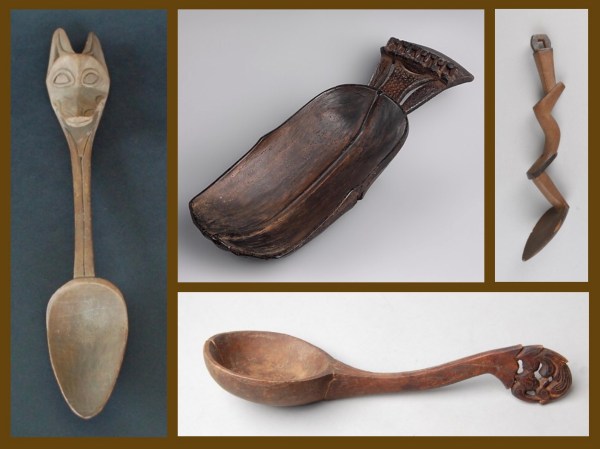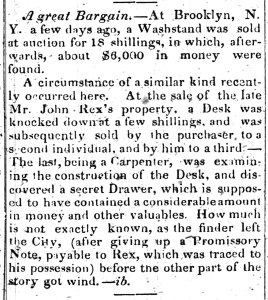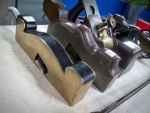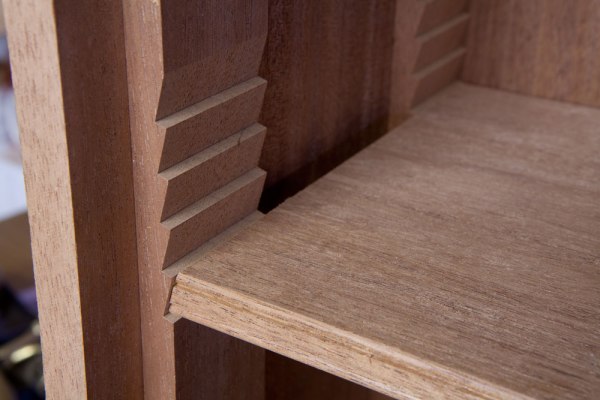Planing Mill Owners’ Tribulations –

Talking with a lumber dealer, a short time ago, about dressed flooring, ceiling, etc., and the awful time he had to get his lumber planed right, set me to thinking of the time when as foreman of a planing mill in New York City I used to smile and look pleasant, when receiving some such message as this, delivered at the same time as the lumber, either by the truck driver or as an N. B. on the mill ticket:
“Please run this lot with very slow feed, as the customer is very particular;” or, “put on new, sharp knives so as to run this maple or oak very, very smooth, as any defects in planing will have to be thrown out;” or, “any piece of lumber in this lot that you think is not good or will not plane perfectly smooth, please lay out, and send word to the office so we can send others to replace them,” or, “if any piece is too thin to hold the thickness, lay it out,” and other requests of like nature.
Now, whenever any fault is found with dressed lumber, if it don’t hold the thickness ordered, or just skins the hair off, or a split or check shows up, or a knot falls out, or the quality is not as good as expected, or the boards warp because a new surface presents itself to the air on either kiln-dried or partly dried stuff, the planing mill man gets it right between the eyes from the dealer.
He either planes it too thin, or he planes it rough with dull knives. His men are careless and slam the lumber and split it on purpose, or they knock the knots out with a hammer, or they don’t pile it right after it is worked, and of course he must make it good or else lose the work, or make an enemy of the yard if he doesn’t make a reduction in his bill, for what is often no fault of his at all.
Why should he be blamed if the lumber is sold for 1½-inch when it is only 1⅜-inch, or if 1½-inch and ordered to be planed just inside the lines, or just skin it, and the grit and dirt cuts the edge of the knives, so the knives are dull before the first piece is through the mill, or if the lumber is dropped from a 40-foot pile into ashes or oyster shells, or that a black, loose knot is sold for a sound one, or imperfections show up after planing? But he is blamed for all this and more too, just the same, and the innocent dealer goes for him to a greater or less extent, as his trade or work sent to the mill will warrant, or the mill man is dependent.
I was shown a lot of southern pine flooring, as a specimen of planing, done at a crack mill, nearly every length of which was gouged or tapered either on the tongue or groove edge, from three to six inches on one end, and the lumber dealer was saying all kinds of nice things of the mill that dressed it.
I told him the mill was not to blame in this case and showed him that the fault was in the lumber, caused by carelessness in edging in the saw mill where the lumber was cut. The boards had been run through very fast and allowed to swing before clear of the saws, and a short bend or split ahead of the cut leaving a stub, was on almost every piece; and if the short, rounding edge was fed next the guide on the planer, a taper end was the result; but if the hollow side was next the guide, a gouge or imperfect tongue would follow, and no planing machine could straighten these short kinks, or carry the lumber any straighter or do the work better on the badly-sawed lumber, than this lot was dressed.
The dealer in question owned up that he had had trouble before with lumber cut at the same mill, and would write them to be more careful and do their work well even if the out-put was less.
A planing mill bill for a month’s dressing, settled in full, without any deductions for spoiled, split, or shaky lumber, would cause a mill man to kick himself around the office to see if he was not dreaming, and before he could recover from the surprise would take off an extra ten per cent. for cash, receipt the bill and return thanks for the shavings.
Planing Mill
The Wood-Worker – March, 1888
—Jeff Burks





